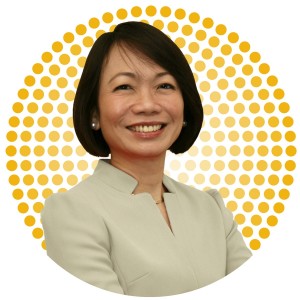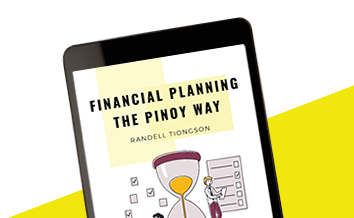2014 Outlook, part 7
By Randell Tiongson on January 15th, 2014
It is my pleasure to presenting the views of Prof. James Lago of the PCCI. James is one of those experts that I often consult especially with the technicals of investing. His views have both macro and micro perspective and many have found his views helpful.James is also an esteemed colleague from the Registered Financial Planner Institute.
The 2014 Outlook of James Lago
On the PSEi
After being the region’s second best performer by May last year, the PSEi reversed course and ended 2013 with a gain of only 1.33%. The bullish trend since its recovery in 2009 remains intact. 2014 starts with the leading and trailing relative valuations at reasonable levels although these are still above its historical averages, as well as the regional average. We anticipate that equity prices will not be as volatile compared to last year. Investors remain optimistic that the Philippine economy could post a 6.0% GDP growth, at least, for this year, albeit slower than 2013’s clip. Corporate earnings are seen to be mixed given issues affecting some sectors. As a whole, our base case scenario for the PSEi this year is range bound trading within a 5,800 – 6,800 range. We view this as a fresh base building for a resumption of the major uptrend in the future.
On the peso-dollar
The peso exhibited its historical tendency to depreciate sharply as it surpassed the 43.00 – 44.00 resistance we expected, touching a 3-year low of 44.75 versus the U.S. dollar in late-August. The overall movement in 2013 was a 43.66% retracement of the November 2008 – January 2013 appreciation and has begun to recouple again with the US dollar’s gradual appreciation. Given the continued flow back into U.S. dollar assets, as well as developed markets, by foreign investors, the peso’s depreciation will most likely continue into 2014. The minor resistances of this depreciation are seen at 45.40 and 46.00. An
appreciation within the year to around 43.00 or even 42.70 is possible as another round of portfolio inflows cannot be discounted within the year.
On domestic yields
Given the calibrated monetary stimulus tapering that will be done by the U.S. Fed staring in January, we expect the yield curve to gradually shift upward. Excess liquidity and portfolio inflows into peso-denominated fixed income securities will most likely keep the rise gradual overall. We expect the negative real returns on short-term yields to continue into 2014. Yields on the longer-tenor instruments will certainly be higher as a result of the Fed’s action as U.S. treasury yields are the global benchmark. The spread between the average short-term and long-term yields will most likely move within a 280 – 330 bps range within the year as investors will continue to find ways around the yield levels. The yield curve is also seen to remain normal and will most likely surpass the end-2012 yield levels.
On the economy
For 2014, our initial GDP growth forecast range is 6.0% – 7.0%. Behind this is household spending (HFCE) projected to rise by 5.5% – 6.0%, the manufacturing sector continuing its above historical average expansion of around 7.0% – 8.0%, exports recovering by a modest 4.0% – 5.0%, the construction sector growing by above 10.0% as a result of
the reconstruction to be undertaken in the calamity damaged provinces, continued infrastructure spending private sector contribution. The services sector expansion is still seen to be an above-average 6.0%-7.0%.
 Joseph James Lago is the Head of the PCCI Securities Brokers Corp. He has over 2 decades of experience in the investments industry in various capacities. He is also a professor of the De La Salle University Graduate School teaching in Management and Economics. He is a much sought after researcher, economist and analysts. He is a Registered Financial Panner.
Joseph James Lago is the Head of the PCCI Securities Brokers Corp. He has over 2 decades of experience in the investments industry in various capacities. He is also a professor of the De La Salle University Graduate School teaching in Management and Economics. He is a much sought after researcher, economist and analysts. He is a Registered Financial Panner.
2014 Outlook, part 6
By Randell Tiongson on January 14th, 2014
It is always a pleasure to present the views of one of the persons I admire a lot, a former colleague and now the CEO of the country’s largest life insurance company, Riza Gervasio Mantaring. A marathon runner, Riza’s disciplined approach in life helped her propel Sun Life to the top spot. I also admire Ms. Mantaring’s passion to help improve the nation’s financial literacy through many endeavors.
The 2014 Outlook of Riza Mantaring
2013 was the proverbial “start with a bang, end with a whimper” year. While fundamentals in the Philippines remained solid, changes in the external environment dragged the market down so that we basically ended the year back where we started.
So as we start 2014, to what do we have to look forward?
The first half of the year is likely to be volatile as the US winds down its economic stimulus program given its improving economy. Performance of its equity markets in 2013 has been stellar, reflecting the outflow of funds from developing economies back to the more developed markets.
Inflation may creep upwards, possibly curbing spending which has been driving our economy. In terms of public spending, government rehabilitation efforts in quake and typhoon-hit areas may somewhat offset the withdrawal of the PDAF and DAP, and hopefully PPP projects finally get underway at the pace necessary to sustain growth.
With an expectation of higher inflation, we may see local bond rates continue to creep up. Likewise, with a weaker earnings growth expectation from the banking sector, we are anticipating lower aggregate earnings growth for the market.
Still, despite a possibly volatile first half of 2014, the second half of the year should be more positive as we get better indicators on company earnings growth and the progress of government infrastructure spending. Longer term, the Philippines remains a favored destination and is forecast to continue its rapid growth over the next few years.
As to where the market will end? We expect a base scenario of 6500 for the Phisix, possibly reaching 6800. Remember, though, that the best time to buy is when the news is negative, not when it is positive!
 Riza Mantaring is the President & CEO of the Sun Life Financial group of companies in the Philippines, and a member of its various boards.She started out in Information Technology and took on various roles through her 20+ years at Sun Life before becoming CEO.
Riza Mantaring is the President & CEO of the Sun Life Financial group of companies in the Philippines, and a member of its various boards.She started out in Information Technology and took on various roles through her 20+ years at Sun Life before becoming CEO.
Riza is a member of the Sun Life Asia Leadership Team. She has also participated in various international special projects and teams such as the task force for worldwide restructuring of the company, the task force for business processes, and special teams for Mergers & Acquisitions.
In 2010, on the occasion of the 100th anniversary of the University of the Philippines College of Engineering, she was selected one of the 100 Most Outstanding Alumni of the past century. In 2011, she was named by Moneysense Magazine one of the 12 Most Influential in Personal Finance, and became a recipient of the 2011 CEO EXCEL award given by the International Association of Business Communicators. Riza was recognized for bold and innovative programs and harnessing the power of communication to implement these programs, including the multi-awarded and pioneering “It’s Time!” financial literacy advocacy.
Riza graduated with a B.S. Electrical Engineering degree (cum laude) from the University of the Philippines, and an M.S. Computer Science from the State University of New York at Albany. She has also attended numerous executive development programs conducted by Harvard University, The Wharton School, Duke University, Oxford University, Asian Institute of Management, and The Niagara Institute. She is a Fellow of the Life Management Institute (with distinction).
She has been a board director of the Philippine Life Insurance Association since 2011 and is currently its Treasurer, and served as a board director of the Philippine Federation of Pre-need Companies from 2006-2008.
2014 Outlook, part 4
By Randell Tiongson on January 10th, 2014
It is such a privilege to be presenting the views of one of the most respected investment columnists in the country, Mr. John Mangun. I have been a fan of his columns for many years and it such an honor to present his views in my series.
The 2014 Outlook of John Mangun
Last year as the market was climbing to its historic high, I wrote that there were two possible scenarios. The Philippine Composite Index (PSEi) would climb to 8,000 and then go on to 10,000. Alternatively, the PSEi would fail to make 8,000 and then fall below 6,000. The second forecast became a reality.
The PSEI reached a high of 7,403 and then retreated to its 2013 low of 5,562.
If the PSEi can break and hold 6,000, then it is on track for a move back to its historic high in approximately 200 point increments. That move to the high will take from three to six months and I am inclined to believe it will be the shorter rather than the longer time frame.
However, if the market does not move above and hold the 6,000 level, then all bets are off and a fall below 5,500 is more than likely. But let’s be optimistic and assume for a moment that 6,000 is coming.
When the market reaches its historic high again, then the same scenarios as 2013 will come into play. We will go much higher or the market will move considerably lower, this year to below 5,000.
As there are many factors that lead us to believe that the stock market will hit or come near to its historic high, at that point there is concern that the 7,500 could be the top for several quarters in the future. Again, if the market cannot reach near 8,000, then we are going to see a strong decline to the 5,000. That is not a roller coaster ride you want to be on if it happens.
Normally, the positive economic and corporate results for 2013 should project a favorable stock market for 2104. This year I am not convinced for several reasons. This year, we will take it quarter by quarter and no longer. Therefore, if you are going to invest in stocks, do it now. Then reevaluate in three months. The first quarter of 2014 may be the best market action for the year.
 Interest in the stock market first hit John Mangun when he was in his early teens, following the stock price action of major companies in the daily newspaper long before the computer.
Interest in the stock market first hit John Mangun when he was in his early teens, following the stock price action of major companies in the daily newspaper long before the computer.
In 1976, Mr. Mangun earned his license as a stock broker on the New York Stock Exchange as well as being licensed and registered for the Options and Commodity markets.
After working for two major Wall Street firms, Mr. Mangun went to England as head of foreign exchange trading for a British asset management company.
Upon his return to the United States, he formed his own investment advisory company administering to the investment needs of corporations and high-net worth individuals.
Mr. Mangun has actively analyzed and traded the Philippine Stock Exchange since 1989, making his first stock purchase (and losing trade) buying shares of San Miguel Corporation on Friday, November 24th, one week before the 1989 coup attempt.
He has been a regular newspaper columnist, writing about the Philippine economy, business, and stock market since 1996. His website is MangunOnMarkets.com.
 Joseph James Lago is the Head of the PCCI Securities Brokers Corp. He has over 2 decades of experience in the investments industry in various capacities. He is also a professor of the De La Salle University Graduate School teaching in Management and Economics. He is a much sought after researcher, economist and analysts. He is a Registered Financial Panner.
Joseph James Lago is the Head of the PCCI Securities Brokers Corp. He has over 2 decades of experience in the investments industry in various capacities. He is also a professor of the De La Salle University Graduate School teaching in Management and Economics. He is a much sought after researcher, economist and analysts. He is a Registered Financial Panner.


